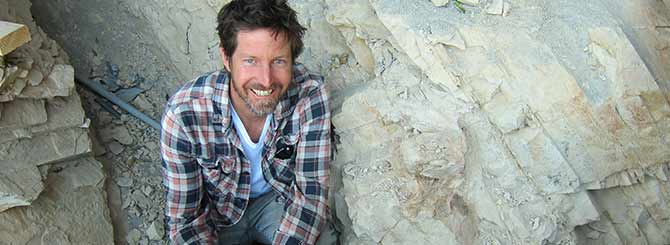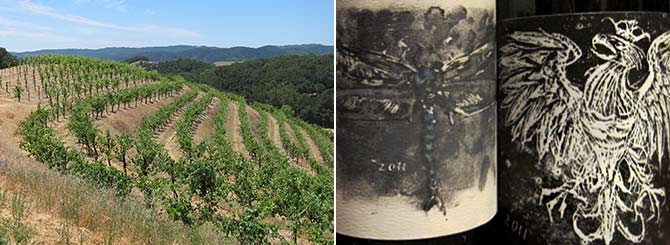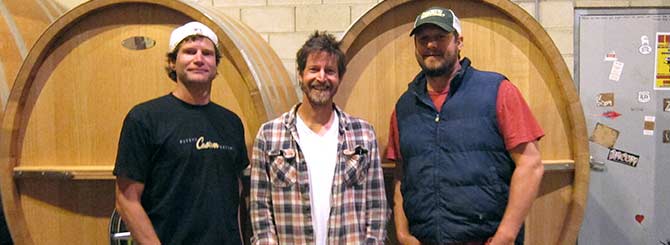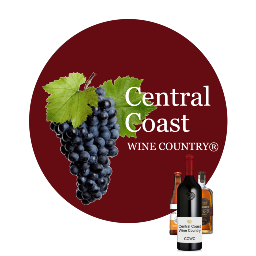
Saxum Vineyards
Address
2800 Willow Creek Rd, Paso Robles, CA 93446
Hours
Not open to the public.
Saxum Vineyards is focused on producing Grenache, Syrah, and Mourvedre based blends from the Willow Creek District of Paso Robles. We let our rocky calcareous soils, steep hillsides, sunny days, and cooling ocean breezes speak through our wines by keeping our yields low, picking the fruit at the peak of ripeness, and using a minimalist approach in the cellar. We respect our land and farm everything sustainably without chemical fertilizers, herbicides, or pesticides. Because our vine’s roots penetrate deep through the fissures in the calcareous soil irrigation is rarely needed. Production is kept at 8000-9000 cases a year divided between ten different cuvees, Broken Stones, James Berry Vineyard, Bone Rock, The Hexe, James Berry Vineyard White, Booker Vineyard, Paderewski Vineyard, Heart Stone Vineyard, G2 Vineyard, and 4hearts Vineyard.
Saxum's Justin Smith Keeps Paso Robles Cool

© W. Blake Gray | Justin Smith helps build his new winery
Some people work hard to be cool. Saxum's owner Justin Smith doesn't need to try – he just is.
He's a guru for the emerging Paso Robles fine wine scene but you only know that by talking to people who learned from him.
| Related stories: |
| Price Hikes Expected For Spectator's Top Wine |
| "Tuscany With Cowboys": California's Central Coast |
He made Wine Spectator's 2010 Wine of the Year – Saxum's 2007 James Berry Vineyard – and 38 of his wines have scored at least 95 points with the Wine Advocate, but he doesn't brag about any of them.
He makes his wines underneath his house in a garage with no restroom but a three-turntable music setup: you can see his priorities. Any music fan would love his collection, with exotic alternative rock (Brian Eno, Television), old blues (Lead Belly) and a smattering of hiphop, but the record geek would want to put all the albums in their sleeves; Smith's too cool for that.
The labels for Saxum's single-vineyard wines are made by local artist Joe Kalionzes, and they're labor-intensive. For the Paderewski Vineyard, Kalionzes scratched an eagle onto a rock that came from the vineyard, and made a block print from it. For the Terry Hoage single vineyard wine he painted a label and scratched some of the paint away to create a dragonfly because, Smith says, "Terry Hoage has a big pond in his vineyard with lots of dragonflies."

© W. Blake Gray | The James Berry vineyard (L): Saxum's labels are inspired by the vineyards
Yet for all the art and music, Smith is a farm boy who came home after college to work the vineyard where he grew up, and live in a house built by his grandfather.
In fact, Smith is arguably the very first raised-on-the-land vintner in Paso Robles.
His father James was a veterinarian in a fast-growing suburb of San Diego who wanted to live in the countryside. He bought the James Berry Vineyard property when Smith was 10 years old and planted Chardonnay, because that's what he liked to drink. He sold the grapes to Fetzer and argued continually with Bobby Fetzer, who wanted them farmed organically.
Justin Smith now farms organically, but is not certified because he says "my dad would keel over." And Justin would be the one who would have to drive him to the emergency room, because James Smith still lives on the property, a few hundred yards away, and still farms a section of the vineyard for his own pleasure. But he has given over the majority of it to his son, although that didn't happen for years.
In the late 1980s, John Alban convinced James Smith that the area in western Paso Robles was better for Rhône varieties than Chardonnay. Little by little the Smiths pulled out Chardonnay and replanted to Mourvèdre, Viognier and Syrah.
Justin did much of that early work. When he graduated from Cal Poly, he came back to manage the vineyard. As payment, his father gave him one block of Syrah. Smith and his college roommate Matt Trevisan started Linne Calodo winery with the fruit, making 300 cases of their first vintage. The pair later parted ways and Smith formed Saxum.
Paso Robles began a planting spree in the 1990s that has continued apace and the young Smith became a go-to source for advice, even though he was still in his twenties and working for his father.
In 2003 he built the garage winery under his house. By 2004 it was the most crowded building in the county. Villa Creek also made its wine there. "There were bins everywhere," Smith says. "At the time we were all making about 500 cases." Remember: no toilet but three turntables.
Saxum is up to 4000 cases today, and naturally the two men who work in the cellar, Mark Adams and Don Burns, have their own labels, Turtle Rock and Ledge. "I've known these guys since high school," Smith says.

© W. Blake Gray | Smith has known his cellarhands, Mark Adams (L) and Don Burns, since high school
One of the great things about Saxum wines is that, unlike many of the Advocate's highest-rated wines, all of them are actually distributed to stores and restaurants. Not in large quantities, mind you: Smith says only about 400 cases make it to the market, mostly in California, New York and Chicago. "We like to send all the cool markets a little bit," he says. The rest goes to a mailing list, but unlike many top wineries, Smith says it's "an offering, not an obligation."
Saxum's largest production wine is Broken Stones, a multi-vineyard blend that's heavily weighted towards Syrah, and is driven by minerality, starting juicy but finishing dry. But its most famous wine is the one Smith has been farming the longest, his family's own James Berry Vineyard red blend. The 2011 is lively and complex, with dark- and red-fruit flavors and some Christmas spice. It's well balanced and delightful.
The wine is made from 69 percent Grenache with smaller portions of Mourvèdre, Syrah and Counoise, and the Syrah is, unusually, co-fermented with a little Roussanne rather than Viognier, which is a more common blending partner for Syrah.
"We played with Viognier, but for us in a warmer climate, Viognier is really big and ripe and slutty," Smith explains. "Roussanne ripens later. The first time it was serendipitous. We were picking Syrah and we decided to pick some Roussanne and throw it in. It really pops the Syrah."
Smith also makes a small amount of wine called Bone Rock from the block of Syrah in the vineyard that he started with; he also co-ferments that with Roussanne. From the oldest vines on the property, this wine resembles a northern Rhône wine more than the others.
"This is where it all started," he says.
That could apply to the entire Paso Robles Rhône wine scene. But Justin Smith is too cool to say that.
Prices worldwide on Wine-Searcher (US$, ex-tax, per 750-ml bottle):
| Wine Name | Avg. Price | |
|---|---|---|
| Saxum Vineyards James Berry Vineyard | $188 | |
| Saxum Vineyards Broken Stones | $144 | |
| Saxum Vineyards Booker Vineyard Red | $161 | |
| Saxum Paderewski Vineyard Red | $153 | |
| Saxum Terry Hoage Vineyard Red | $151 |
Nothing listed, but stay tune.
WINE TYPES:
Grenache,
Mourvèdre,
Petite Sirah,
Red Blend,
Red Rhône-Style Blend,
Syrah,
White Rhône-Style Blend
